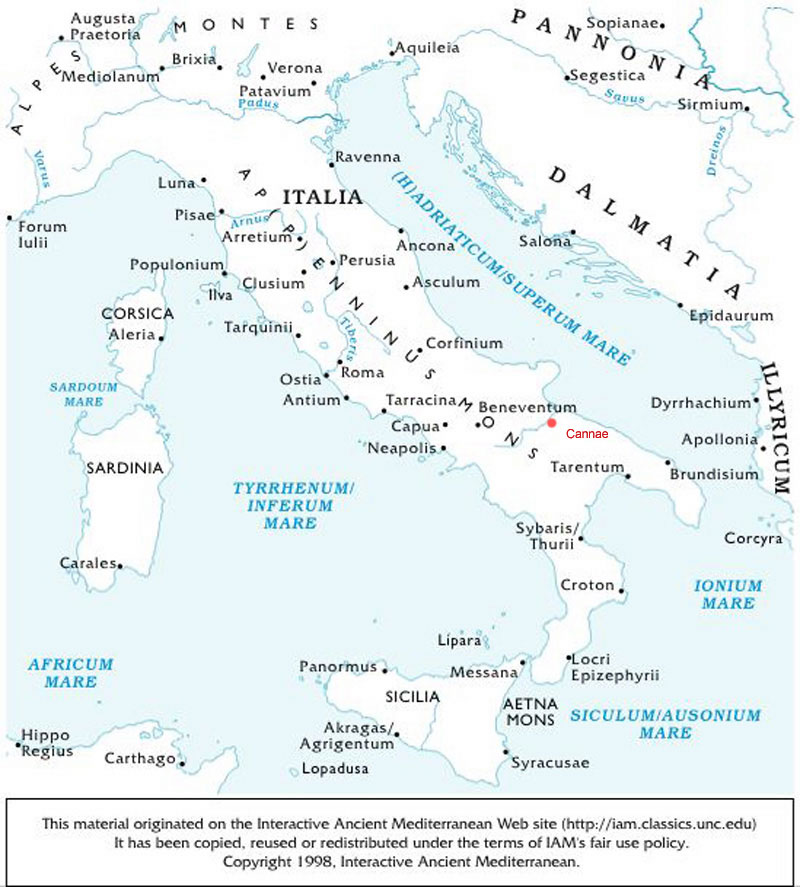Major battle near the ancient village of Cannae, in Apulia (Puglia), southeastern Italy, between the forces of Rome and Carthage during the Second Punic War. The Romans were crushed by the troops of Hannibal, with the help of his allies - the Africans, Gauls, and Spaniards. The Roman consuls of 216 BC, Lucius Aemilius Paulus and Gaius Terentius Varro, prepared to meet Hannibal in a pitched battle and so advanced to Cannae with about 80,000 men. The Carthaginians had about 40,000 infantry and 10,000 cavalry. The Romans faced southwest, with their right wing resting on the Aufidus River and with the sea about three miles to their rear. They placed their cavalry (about 6,000) on their wings and massed their infantry in an exceptionally deep (and therefore narrow) formation in the centre in the hope of breaking the enemy centre by weight and push. To counter this, Hannibal relied on the elasticity of his formation. He stationed his Gallic and Spanish infantry in the centre, two groups of his African troops on their flanks, and the cavalry on the wings. But before engaging the enemy, his line adopted a crescent shape, the centre advancing with the African troops on their flanks en échelon. As he anticipated, his cavalry won the struggle on the wings, and some then swept around behind the enemy.Meanwhile, the Roman infantry gradually forced back Hannibal's centre, and victory or defeat turned upon whether the latter held. It did: although it fell back, it did not break, and the Roman centre was gradually drawn forward into a trap. Hannibal's crescent had now become a circle: the African troops, past whom the Romans were now thrusting, turned inward against them, and the Carthaginian cavalry was in the rear. Pressed tightly together and hence unable to properly use their arms, the Romans were surrounded and cut to pieces. Only 14,000 Roman soldiers escaped, and 10,000 more were captured; the rest were killed. The Carthaginians lost about 6,000 men. Cannae is regarded by military historians as a classic example of a victorious double envelopment. (Encyclopaedia Britannica Online.)
